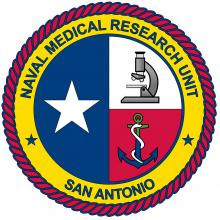Extending the “Golden Hour:” Prolonged Pre-Hospital Survival and Stabilization of Hemorrhagic Shock that Permits Delayed Whole Blood Resuscitation and Subsequent Survival.
Hemorrhage remains a leading cause of potentially survivable (PS) combat casualty and civilian trauma mortality. In Operations Iraqi and Enduring Freedom, hemorrhage accounted for 97% of pre-hospital PS mortality and 86% of hospital PS mortality (Eastridge et al., 2011; Eastridge et al., 2012). Severe blood loss causes irreversible injury by decreasing oxygen and substrate delivery to tissues. Prolonged (e.g. 4-6 hours) evacuation to a hospital in Anti-access Area Denial (A2/AD) environments eliminates the possibility of rapid blood or fluid resuscitation. Hence, the development of advanced en route hypotensive therapeutic resuscitation strategies to stabilize casualties and improve survival is a vital priority.
Navy researchers are investigating novel, low-volume, permissively hypotensive resuscitation strategies to pharmacologically target aspects of cardiovascular function, metabolic stabilization, as well as coagulation and immune system functions to improve casualty stabilization, decrease resuscitation fluid volume requirements, and improve pre-hospital survival and long-term outcomes.
The specific objectives of this research are to develop an optimal pre-hospital therapeutic that will 1.) Maintain a state of permissive hypotension with sufficient perfusion pressure to protect vital organs from irreversible damage, while avoiding abrupt increases in intravascular volume or pressure that would dislodge newly formed clots and dilute clotting factors; 2.) Provide metabolic and cardiovascular stabilization; and 3.) Mitigate ischemia/reperfusion injury (IRI) following whole blood resuscitation.
The research directly addresses the priority area and specific scientific need set forth set forth by the 59th Medical Wing of “Extending the Golden Hour”.

